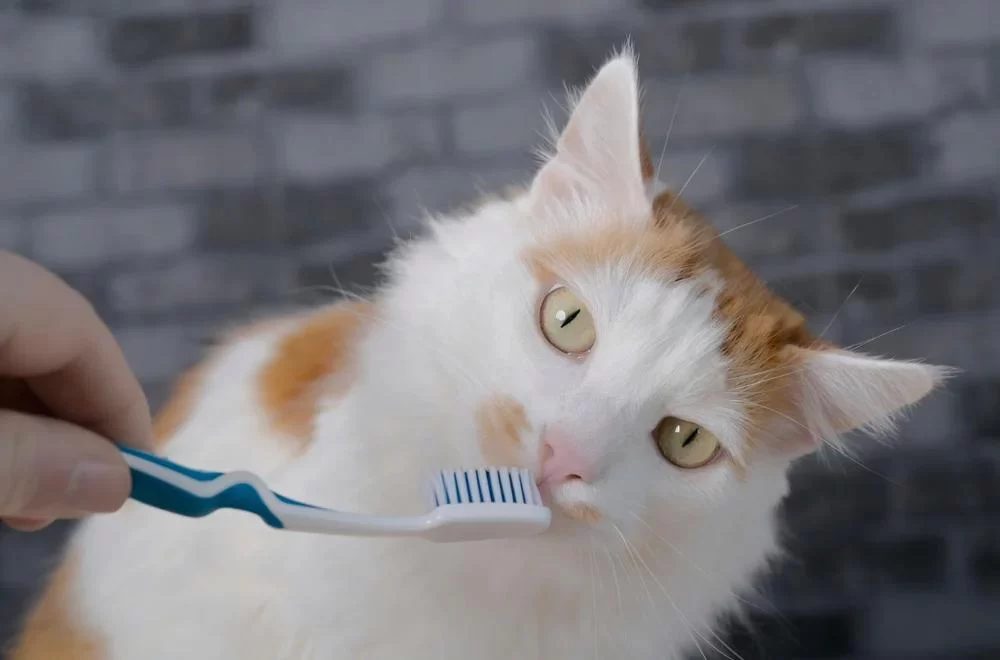Signs Your Pet Might Have Dental Problems
As pet owners, we always want the best for our furry friends, but when it comes to their health, dental care is often overlooked. For me, it wasn’t until my dog, Max, started showing signs of discomfort while eating that I realized how important dental health is for pets. I’ve learned a lot about dental problems in pets since then, and now I’m here to share what I’ve discovered. Recognizing the signs of dental issues early can save your pet from unnecessary pain and costly treatments down the line.
1. Bad Breath
If your pet has a distinctively foul odor coming from their mouth, it might not just be a random occurrence—it could be a sign of dental issues. Just like humans, pets can suffer from bad breath due to poor oral hygiene. I first noticed Max's bad breath one evening while we were cuddling on the couch. At first, I thought it was just a result of him eating something he shouldn’t have, but when the smell didn’t go away, I started to get concerned.
Bad breath in pets, especially if it’s persistent, could indicate gum disease, tooth decay, or an infection. If your pet’s breath smells worse than usual or has a pungent, almost metallic odor, it’s a clear sign that they might have dental problems.
2. Difficulty Eating or Drooling Excessively
Pets with dental issues may find it painful to eat or chew their food. Max started avoiding his dry kibble one day and would only eat soft food. When I tried to give him his favorite treats, I noticed that he was chewing oddly, tilting his head, or even dropping the treat instead of eating it. This discomfort could indicate that there’s something wrong with his teeth or gums.
Excessive drooling is another common sign. If your pet suddenly starts drooling a lot more than usual, especially while eating or drinking, it may be due to an oral health issue. The drool could be a result of inflammation or infection in the gums or teeth.
3. Red, Swollen, or Bleeding Gums
One of the most obvious signs that your pet might have dental problems is if their gums are red, swollen, or bleeding. When I finally checked Max's gums closely, I saw that they were more inflamed than usual, and there were signs of blood when I gently brushed his teeth. Healthy gums should be pink, not red or swollen. Swollen or bleeding gums can indicate gum disease (gingivitis) or more severe periodontal disease, which can cause tooth loss if not treated.
If your pet has any of these signs, it’s time to take a closer look at their oral health and make an appointment with your vet.
4. Tooth Loss or Loose Teeth
Tooth loss in pets is a serious problem and often a sign of advanced dental disease. If you notice that your pet is missing teeth or has loose teeth, it could be due to periodontal disease. For Max, I noticed that he seemed to have trouble chewing his food, and when I examined his mouth, I found a loose tooth that was about to fall out. It was a painful moment for both of us, but it was also a wake-up call about the importance of dental care.
If your pet’s teeth are loose or falling out, it’s essential to get them checked by a veterinarian immediately to prevent further damage to their mouth and overall health.
5. Changes in Behavior or Increased Irritability
Pets in pain often display behavioral changes. Max, who was usually calm and easygoing, became irritable and would snap at me when I tried to pet him near his mouth. He wasn’t himself, and I couldn’t figure out why until I realized that his dental pain was likely causing his change in behavior. Pets may also become less playful or more withdrawn when they’re in pain from oral issues.
If your pet has suddenly become more aggressive or seems more sensitive than usual, dental problems might be the cause. Keep an eye on their behavior and look for any signs of discomfort, especially around the mouth or head area.
6. Excessive Tartar or Plaque Buildup
Another telltale sign that your pet might have dental problems is the presence of tartar or plaque on their teeth. I didn’t realize how much tartar had built up on Max’s teeth until I looked inside his mouth one day. Tartar is a hard, yellowish-brown substance that forms on teeth when plaque isn’t removed. If it’s left untreated, it can lead to gum disease and even tooth loss. Regularly checking your pet’s teeth can help you catch tartar buildup early, before it becomes a serious problem.
7. Sensitivity to Touch Around the Mouth
Just like people, pets can experience sensitivity in their mouths. If your pet pulls away when you try to touch their face, particularly around the mouth or jaw area, it could be a sign of pain or discomfort. Max started reacting this way when I gently touched his cheek, and it was a clear indication that his dental issues were bothering him more than I had realized.
If your pet is sensitive or reluctant to have their face or mouth touched, it’s important to investigate further and schedule a visit to the vet for a full oral examination.
8. Changes in Eating Habits
If your pet starts to avoid certain types of food or changes their eating habits, it could indicate dental issues. Max, who used to love chewing on bones, started to avoid them completely. He also seemed to struggle with eating dry food, preferring softer meals instead. Any change in your pet’s eating habits—whether they’re eating less, avoiding food, or even seeking out softer options—should be looked at closely as a potential sign of dental problems.
9. Weight Loss or Poor Coat Condition
When dental problems go untreated, they can affect your pet’s overall health. Difficulty eating due to tooth pain can lead to weight loss, and poor oral health can even affect your pet’s coat condition. Max started losing weight after a few weeks of avoiding food because of his dental discomfort. His once shiny coat began to look dull and less healthy. If your pet’s coat condition is deteriorating or they’re losing weight, it might be linked to their dental health.
Dental issues can have far-reaching consequences for your pet’s well-being, so it’s important to monitor your pet’s overall health as well as their dental health.
Taking Action: What You Can Do
If you notice any of the signs above, it’s essential to take action quickly. Regular dental check-ups, at-home dental care, and proper diet can help prevent dental issues from becoming severe. Regular brushing, providing dental chews, and scheduling professional cleanings with your vet can go a long way in ensuring your pet’s teeth stay healthy.
Max’s dental issues could have been avoided if I had been more proactive about his oral care earlier on. Now, I make sure to brush his teeth regularly and visit the vet for check-ups. By staying on top of his dental health, I’m helping him avoid pain and discomfort in the future.
Taking care of your pet’s teeth is essential for their overall health and well-being. If you notice any signs of dental problems, don’t wait—make an appointment with your vet to address the issue as soon as possible. Your pet will thank you for it with a happy, healthy smile!












